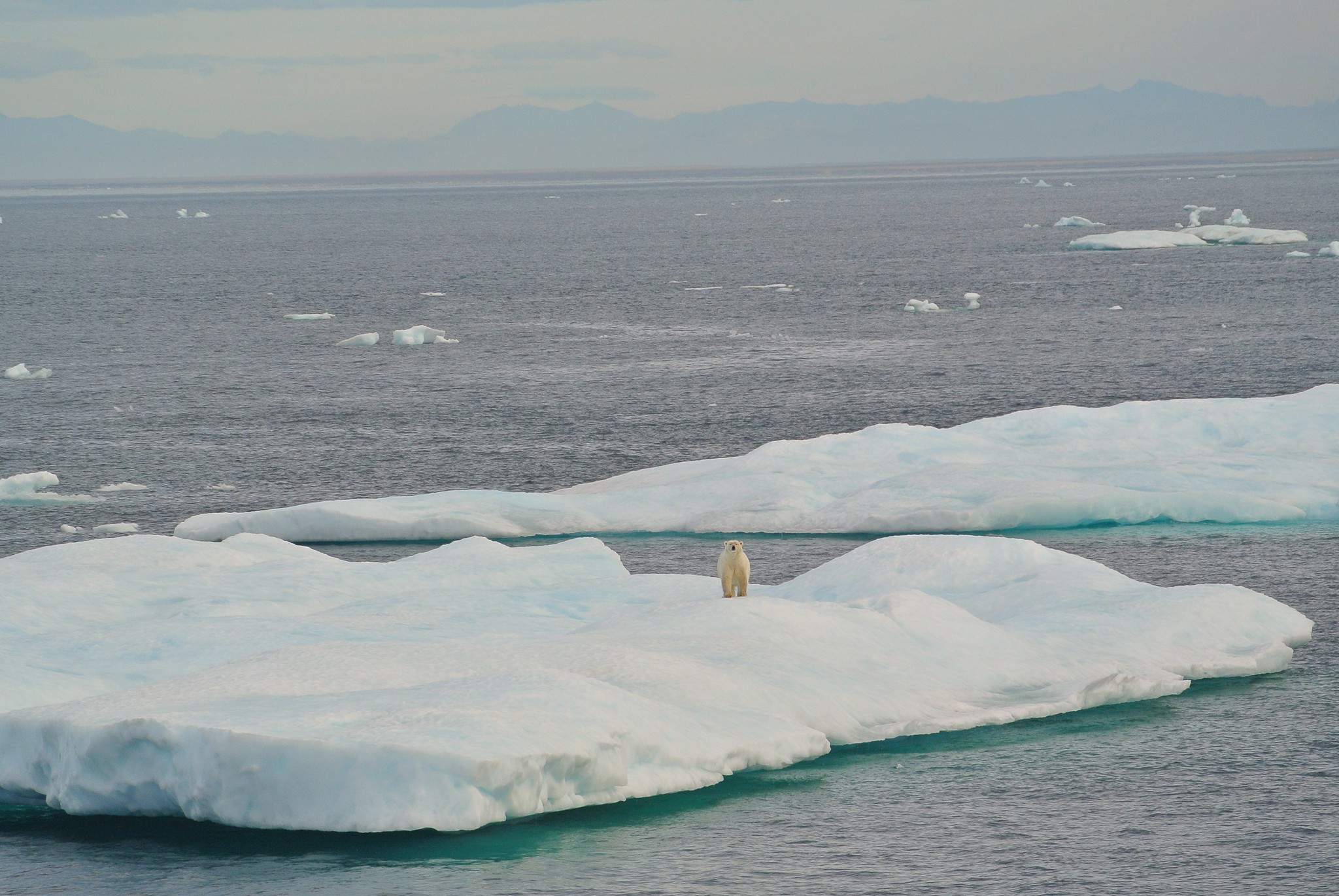The effects of Arctic sea ice retreat are showing up in polar bear poop now
Bears forced ashore be diminishing ice cover have different gut bacteria than bears who remain on ice.

The decline of Arctic sea ice is tracked by satellites in space, observed by mariners who travel northern waters and apparent in the beaches eroded away by seas that were once reliably frozen but are now open and roiled by wind-driven waves.
And now scientists have found evidence of sea ice loss in another place: polar bear poop.
A new study conducted in Alaska finds that the fecal bacteria of polar bears that spend a lot of time on land is far more diverse than the bacteria found in feces of bears that spend all their time out on the sea ice.
It is the first documentation of climate-driven changes altering the gut microbiota of a free-ranging wild animal, said the study, published in the International Society for Microbial Ecology’s ISME Journal.
One likely explanation: changes to what the bears eat.
“Onshore bears have a different gut microbiota than offshore bears,” said polar bear expert Todd Atwood, a wildlife biologist at the U.S. Geological Survey and a co-author of the study. “What that’s probably being driven by are differences in diet.”
Researchers said the differences “may ultimately have important consequences for their health,” and recommended that gut health be taken into account in conservation plans, but stopped short of speculating about specific health impacts that could be linked to the changes in the bears’ gut bacteria.
The study, led by a scientist from Britain’s Cardiff University and co-authored by scientists from Italy and Canada as well as Atwood, relies on samples taken from rectums of 112 polar bears in the Southern Beaufort Sea population. The sampling was incorporated into the USGS’s long-term polar bear research program that tracks live animals and, when possible, temporarily immobilizes them so that they can be measured and monitored. The fecal samples were gathered in 2008, 2009, 2010 and 2013.
Polar bears’ main source of food is high-fat seals. Polar bears hunt seals from the ice, so ice retreat diminishes opportunities to get seal meat. For Southern Beaufort Sea polar bears coping with the loss of sea ice, bowhead scraps left on the beach are particularly enticing.
The scraps are left after Inupiat whalers in villages like Kaktovik butcher the whales they harvest in their traditional subsistence hunts; the bone piles around the village of Kaktovik, in particular, have drawn crowds of bears and helped fuel a seasonal bear-viewing industry in the village.
Polar bears in several regions of the Arctic have been found eating dead whales, and scientists believe the high-fat carcasses can temporarily buffer the bears’ lost seal-hunting opportunities.
However, the scraps left by Inupiat whalers in Alaska are not a reliable source of food for polar bears, and they may not be fatty enough to meet the bears’ nutritional needs. “What gets left at the bone piles is not necessarily the blubber,” Atwood said.
Onshore around the Arctic, polar bears have been spotted eating alternative foods, like bird eggs, birds and even plants, though these terrestrial foods cannot come close to replacing the nutritional value of fatty seals that become harder to hunt as ice retreats, according to USGS research.
Whether they are on the ice or on land, polar bears generally don’t eat much in late summer and fall, the time when the ice is lowest, Atwood said. Those that come to shore do have a little more food available and are likely making the better choice, he said, but in general, polar bears lie around and are in “energy-conservation mode” at that time of year.
Factors other than their diverse diet could be also affecting the bacteria inside land-lingering polar bears’ intestines.
Those bears that hang around the shoreline are sharing territory with other species, including humans — and more likely to be sharing germs, the study said.
“Beach-cast bowhead whale remains frequently lie in close proximity to settlements and towns, increasing the potential for microbiota and pathogen spillover to polar bears from humans, and domestic animals. The high gut microbiota diversity seen in onshore bears may therefore be associated with this complex network of interspecific contacts,” it said.
It could be a combination of changed diet and exposure to different species that is resulting in different fecal contents, Atwood said.
The Southern Beaufort Sea polar bears are particularly hard-hit by ice loss and are faring worse than polar bears in the Chukchi Sea to the west and some other regions of the Arctic, past studies have found. The Southern Beaufort Sea bears have declined in total number and have inferior body condition.
The Southern Beaufort Sea bears have a clear movement to shore that has been quantified by scientists from the USGS and other organizations.
Less than 6 percent of Southern Beaufort Sea polar bears spent significant time ashore in the 1990s, but by the 2000-2014 period, the open-water season had expanded by 36 days and about a fifth of the bears in the population were spending large amounts of time ashore, according to a 2016 study led by Atwood. And those that came ashore have been spending more time there, stretching their on-land stays by more than a month, compared to the 1990s, according to that 2016 study.
Southern Beaufort Sea polar bears may have felt additional pressures to swim ashore this year.
Ice in the Beaufort was especially low this fall, according to the National Snow and Ice Data Center. Warm water temperatures lingered in both the Beaufort and the Chukchi, and the full winter freeze-up that arrived in the Beaufort after Nov. 10 was among the latest in the satellite record, according to Rick Thoman of the Alaska Center for Climate Assessment and Policy.